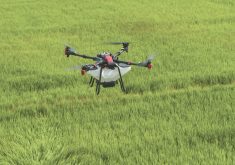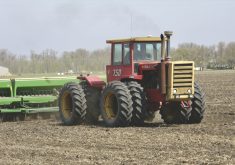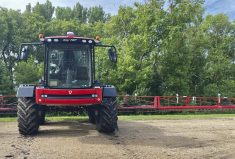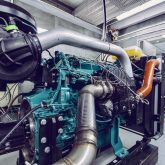We are in a difficult world,” said Scott Wine, CEO of CNH Industrial, as he took the stage to welcome a group of journalists to the company’s Technology Day near Phoenix, Arizona, last fall. “It’s brutal out there.”
He was referring to a number of pressures manufacturers are feeling from global concerns affecting all brands and their customers — farmers in this case. Although he didn’t list those concerns by name, it’s easy to understand what he was referring to: supply disruptions, labour shortages, war, and the need for engineers to come up with powertrain solutions that will allow brands to deliver low- or zero-emissions machinery that can still do the job efficiently.
Showing off the results of that search for ever more efficiency was exactly what the Technology Day event was all about. Prototype and concept machines from the company’s two main brands, Case IH and New Holland, were lined up in fields at the Maricopa County location for attendees to learn about, with product specialists ready to talk about the cutting-edge tech built into them.
Read Also
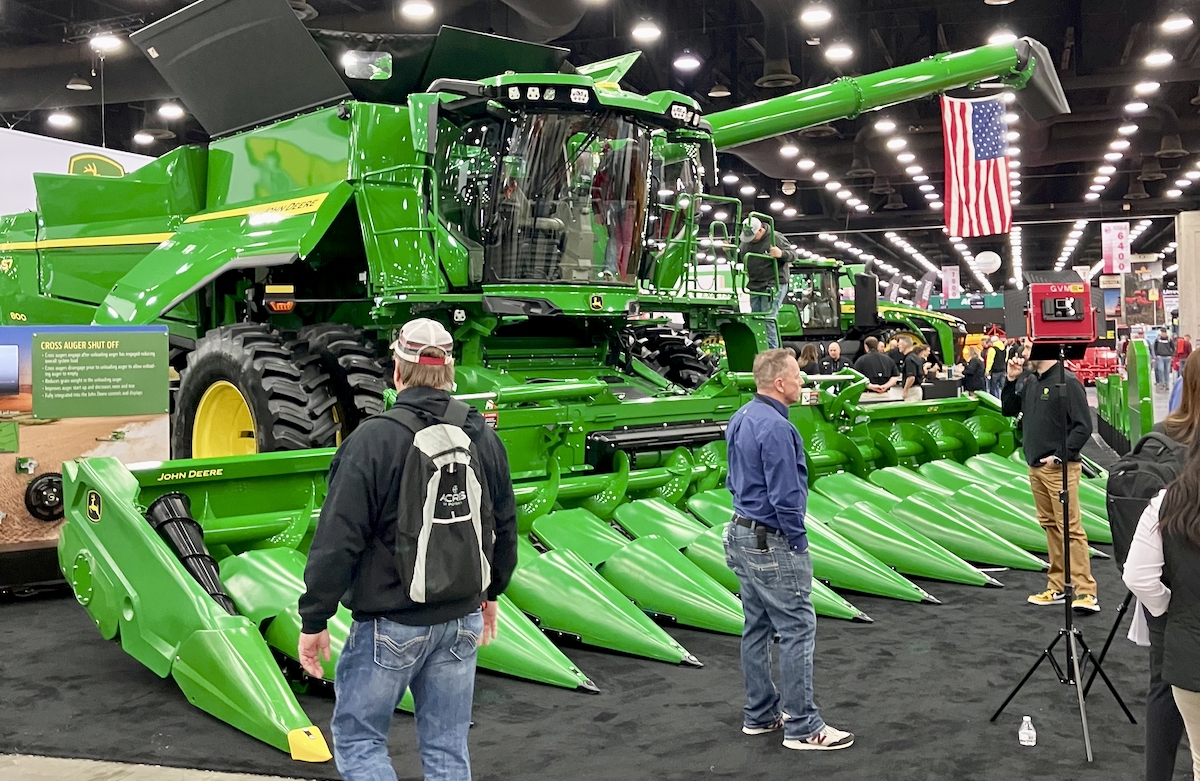
The pros and cons of new technologies
New farm technology hitting the marketplace can be awfully enticing, and it’s not been unheard of in years gone by…
“What we’ve tried to do today is give you the opportunity to see our tech portfolio in its fullest, right out here in these fields,” Wine said. “The value is to see what we’re driving, where we’re going with our tech stack and how that’s going to benefit customers.”
‘Tech stack’
In case you haven’t heard it before, the term “tech stack,” which has become one of the buzz phrases in engineering and manufacturing circles these days, refers to the list of automation, connectivity and autonomous features engineers are now cramming into equipment.
Lately, that stack of technology has grown pretty tall at all the brands, because executives believe farmers will see a payback from all the features they offer. And as most brand executives see it, it’s the only way to deal with those brutal difficulties Wine mentioned.
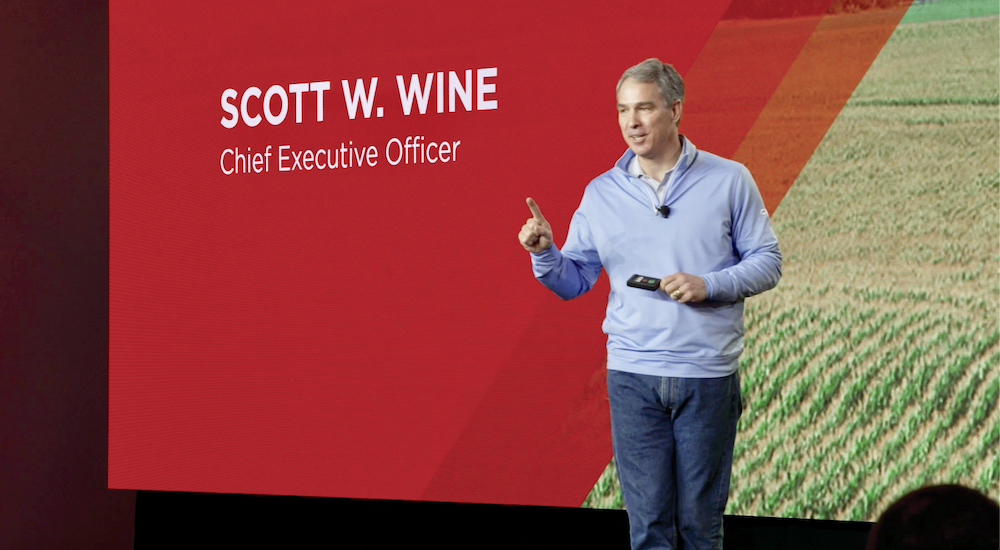
“I think you’re going to see today how we can bring a focus on sustainability and value for our customers at the same time” Wine continued. “In that value, if we think about autonomy and precision, it helps offset some of the concerns we all have about getting the necessary labour. We have solutions that can help people get by with less labour or less-skilled labour.
“You’ll also see today the investments we’re making in sustainable fuels. The ability to drive a negative carbon footprint is very exciting, and it’s coming to life very, very quickly.”
Key to much of the digital wizardry on display, specifically in the autonomous machines, was the influx of technology CNH Industrial acquired when it purchased Raven Technology, and it’s a big part of the reason for the speed at which the company is now forging ahead to deliver next-level technology in Case IH and NH equipment.
“We are fully leveraging the Raven advantage as we accelerate our autonomy programs and enhance our tech stack capabilities, and deliver solutions faster,” echoed Parag Garg, chief digital product officer at CNH Industrial. “In just over a year, we’ve developed and deployed cutting-edge technology to the market that has been scaled across multiple farming operations at an exceptionally fast pace.”
Just how important is that accelerated pace of development in technology for CNH? The company actually spelled it out pretty clearly for the benefit of the financial journalists who also attended the Technology Day.
“CNH Industrial’s full year 2022 agriculture net sales are expected to include an estimated $900 million contribution coming exclusively from precision technology components,” reads the company’s press statement. “We forecast a 10 to 15 per cent annual growth rate across the next two to three years and are aggressively pursuing an estimated US$1 billion in 2023 net sales contribution from precision technology components.”
According to Garg, CNH’s two brands will be improving the connectivity and analytics packages they make available to farmers as well as using Raven’s tech to build on the two brands’ “existing modular architecture.”
Autonomous tillage
So just exactly what machines were company execs prepared to show to the media?
The Case IH Trident 5550 autonomous spreaders were there, but they were unveiled months earlier. However, there was another new fully autonomous project on display, the Case IH tractor capable of conducting tillage operations on its own.
“We’re really excited about it,” Garg told Country Guide. “We had customers utilizing the product last season, so we’re excited to demo that publicly.”
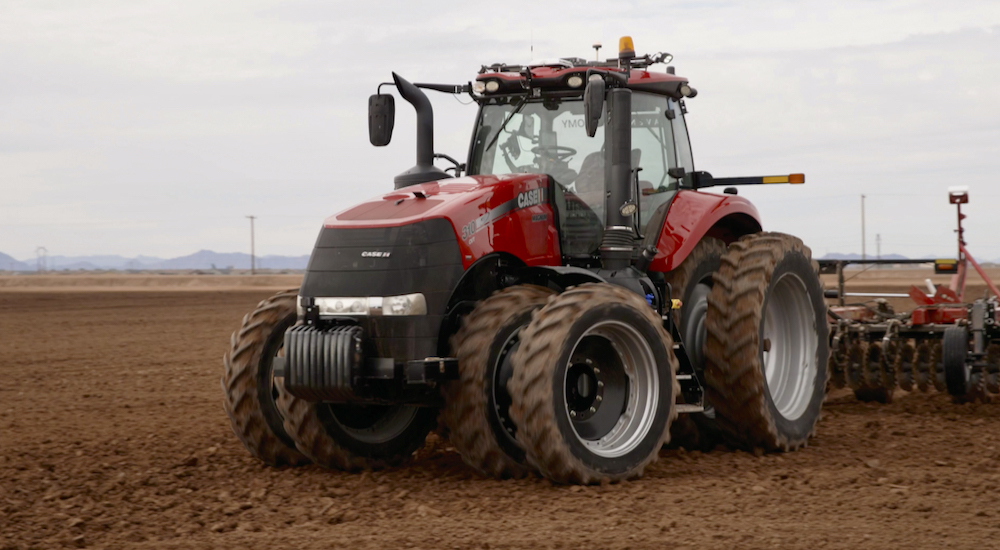
There was also the Driver Assist Harvest Solution driverless grain cart. The combine operator can summon the tractor and grain cart when needed, and can control it as it pulls alongside the combine.
Raven had showcased the driverless grain cart on its website as a project in development for several months prior to the Case IH acquisition, so it’s not surprising to see that system appearing in one of the CNH brands. The autonomous DOT seeder thaoriginally created by Saskatchewan-based SeedMaster was purchased by Raven, and Garg says it remains under development. But there are no firm plans for a release date.
Then there was the NH large square baler that uses LiDAR to scan the swath ahead for size and density, using that data to control the tractor speed and steering as well as adjusting baler settings.
Quick recharge
Tech Day had news on pending global emissions standards. The battery-electric 120-horsepower T4E tractor made its public debut.
“It has a 70-watt battery,” Marc Kermish, chief information and interim chief technology and quality officer, told Country Guide. “It has a dual 24 (battery) pack and will be cooled so we can do high-speed charging. So we can reduce that charge time to about an hour for an 80 per cent recharge. The pack itself will be able to support an e-motor peak of up to about 120 horsepower. A speed of about 40 km/h and a max torque of about 440 Nm (325 foot-pounds). We can get about eight usable hours of time out of that battery.”
To support further development of electric drive technology CNH has opened a new R&D centre in Detroit, Kermish said.
“What we opened in Detroit was our electrification centre, which is where all of our engineering team sits. We have prototyping capability there. We can build prototypes, assemble battery packs, but it’s not an actual manufacturing site. As we near production we’re still sourcing the battery with our design packaging from a third party. We will be manufacturing them in Detroit with a partner called Rousch Industries.”
But an electric drive system isn’t the only cutting edge feature the T4E has built into it. It is also a fully autonomous-capable tractor. But how did the brand come to the decision to incorporate both of those features into the T4E?
“We went out and talked to our customers,” Kermish explained. “It was important to our customers. There’s a premium component as you’re bringing in new technology. Certainly our customers and farmers are sensitive to what those premium prices are. So our basic feedback was, ‘If you’re doing electric just for the sake of electric, and you’re going to charge me a premium for that, I’m not sure I get the same value. My real problem isn’t solving for emissions. The real problem is solving for productivity and input costs.’ It only made sense after getting that customer feedback to add that autonomous feature set.”
Methane and LNG
There was more news on the alternative fuels front. New Holland displayed a pre-production prototype methane- and LNG-fuelled model for its T7 tractor line.
Summing up his address to the crowd, Scott Wine said, “The biggest takeaway I’d like to see is, I think what you’re going to see is how much impressive and incredible capability we currently have.”
That’s a message I keep hearing from all brand executives who’ve been emphasizing it loudly and clearly recently, as each brand showcases it advancing technologies. More technology, they say, will be important to farmers in order to allow them to meet future demands on reducing emissions and inputs while coping with climate change, all while remaining profitable.
But there’s one more reason to turn to high technology, and it may be the strongest driver for manufacturers. One brand executive at another event a while ago made a comment that spelled it out pretty clearly. “All machinery built in the last decade or two can still go out into the field and do the job very satisfactorily,” he said. “Incorporating advanced technology into new equipment is what brands will need to do now and into the future to convince farmers to spend their money on the newest machines.”




